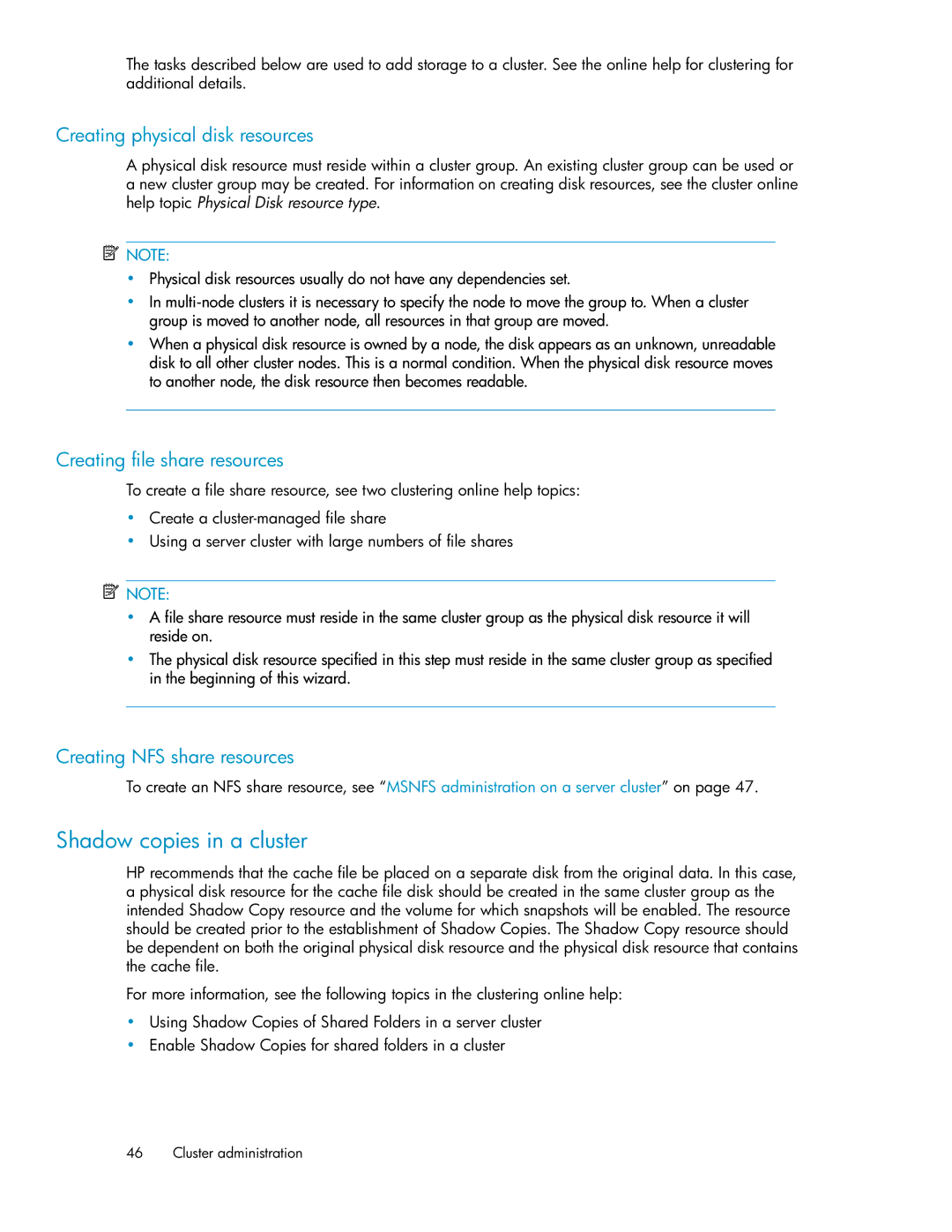
The tasks described below are used to add storage to a cluster. See the online help for clustering for additional details.
Creating physical disk resources
A physical disk resource must reside within a cluster group. An existing cluster group can be used or a new cluster group may be created. For information on creating disk resources, see the cluster online help topic Physical Disk resource type.
![]() NOTE:
NOTE:
•Physical disk resources usually do not have any dependencies set.
•In
•When a physical disk resource is owned by a node, the disk appears as an unknown, unreadable disk to all other cluster nodes. This is a normal condition. When the physical disk resource moves to another node, the disk resource then becomes readable.
Creating file share resources
To create a file share resource, see two clustering online help topics:
•Create a
•Using a server cluster with large numbers of file shares
![]() NOTE:
NOTE:
•A file share resource must reside in the same cluster group as the physical disk resource it will reside on.
•The physical disk resource specified in this step must reside in the same cluster group as specified in the beginning of this wizard.
Creating NFS share resources
To create an NFS share resource, see “MSNFS administration on a server cluster” on page 47.
Shadow copies in a cluster
HP recommends that the cache file be placed on a separate disk from the original data. In this case, a physical disk resource for the cache file disk should be created in the same cluster group as the intended Shadow Copy resource and the volume for which snapshots will be enabled. The resource should be created prior to the establishment of Shadow Copies. The Shadow Copy resource should be dependent on both the original physical disk resource and the physical disk resource that contains the cache file.
For more information, see the following topics in the clustering online help:
•Using Shadow Copies of Shared Folders in a server cluster
•Enable Shadow Copies for shared folders in a cluster
46 Cluster administration
